#constantinopol
Explore tagged Tumblr posts
Text

2 mai: Sfântul Ierarh Atanasie al III-lea cel Nou (Patelarie), Patriarhul Constantinopolului
Celebrat pe 2 mai, Sfântul Ierarh Atanasie al III-lea cel Nou Patelarie, făcător de minuni din Lubensk, cu numele lumesc de Alexis, s-a născut în anul 1560, pe insula Creta, în pioasa familie grecească Patelarios. În pofida înaltei sale educații și poziții sociale, a fost atras de viața asceților creștini.
https://www.diane.ro/2025/05/2-mai-sfantul-ierarh-atanasie-al-iii.html
0 notes
Text
Imperiul Bizantin: De la ascensiunea Constantinopolului până la căderea sa în 1453 - Moștenire, cultură și semnificație istorică
Imperiul Bizantin, adesea umbrit de omologul său occidental, este o civilizație fascinantă și complexă care a jucat un rol crucial în modelarea lumii medievale. Cunoscut sub numele de Imperiul Roman de Răsărit, Bizanțul a fost un far al continuității între lumea romană antică și era creștină medievală, servind ca o punte între Est și Vest timp de peste o mie de ani. Reziliența imperiului în fața…
#constantinopol#cucerirea otomană a Constantinopolului#Căderea Constantinopolelui#căderea Constantinopolului#imperiul bizantin#Iustinian#moștenirea bizantină în Europa modernă#moștenirea lui Iustinian I#mostenire
0 notes
Text
If you think the Roman Empire fell in 476 AD, I'm here to tell you: No, it didn't!
The Metropolitan Museum of Art summarizes the history of the Roman Empire! This explains why Greeks called themselves Romans till the 19th century!

transcript: In 330 A.D., the first Christian ruler of the Roman empire, Constantine the Great (r. 306–337) (26.229), transferred the ancient imperial capital from Rome to the city of Byzantion located on the easternmost territory of the European continent, at a major intersection of east-west trade. The emperor renamed this ancient port city Constantinople (“the city of Constantine”) in his own honor (detail, 17.190.1673–1712); it was also called the “New Rome,” owing to the city’s new status as political capital of the Roman empire. The Christian, ultimately Greek-speaking state ruled from that city would come to be called Byzantium by modern historians, although the empire’s medieval citizens described themselves as “Rhomaioi,” Romans, and considered themselves the inheritors of the ancient Roman empire.
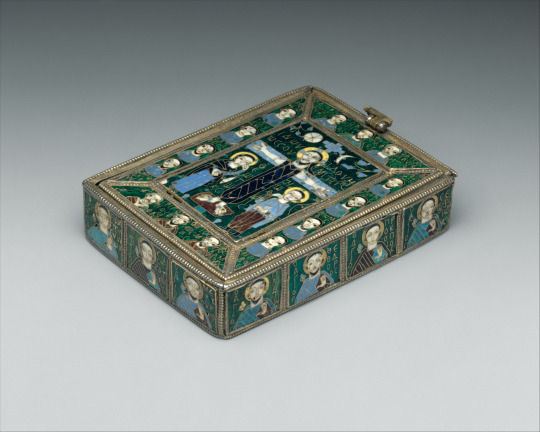


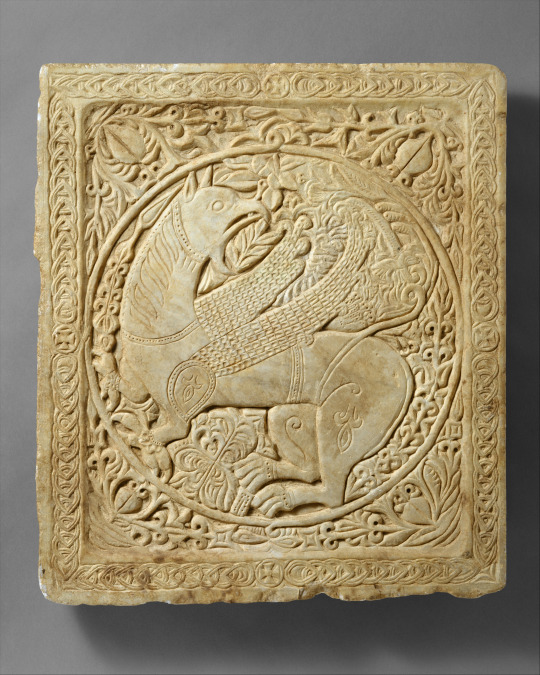
30 notes
·
View notes
Text
Echoes of Brâncoveanu: The Story of Lady Bălașa
Join me on a captivating journey through history as we explore the life of one remarkable woman—Bălașa, the sixth daughter of the illustrious Constantin Brâncoveanu. Born in 1693, Bălașa grew up amidst the splendor of the court alongside her brothers and sisters. At just 16, she married Manolache Lambrino, a member of a prosperous family, but her life would soon take a dark turn. On the…
#brancoveanu#Brâncoveanu&039;s hospital#Bucharest#Church#Constantinopole#Dâmbovița#Lady Bălașa#Nicolae Ceausescu
0 notes
Text
Towards the Galata Tower, Istanbul, Turkey
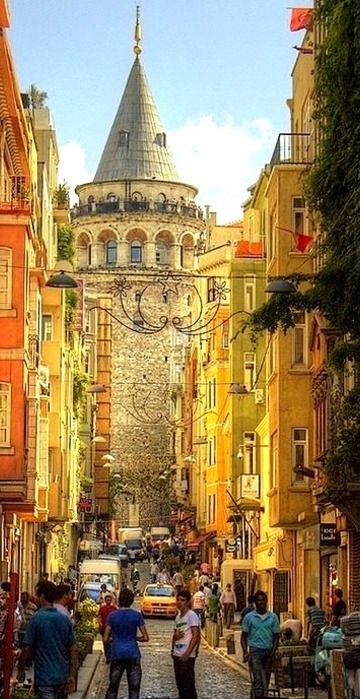
1 note
·
View note
Photo
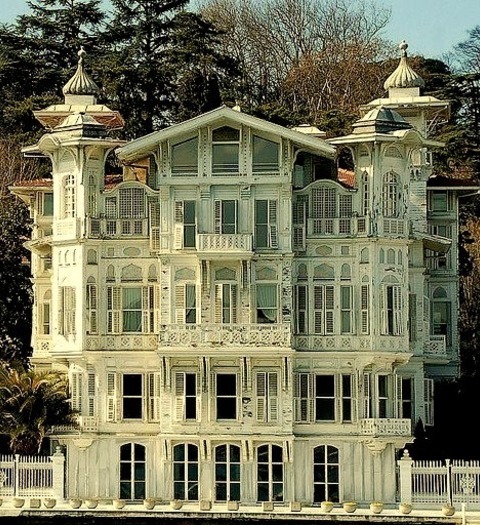
Beautiful house on Bosphorus shores, Istanbul, Turkey
0 notes
Text
Beautiful house on Bosphorus shores, Istanbul, Turkey
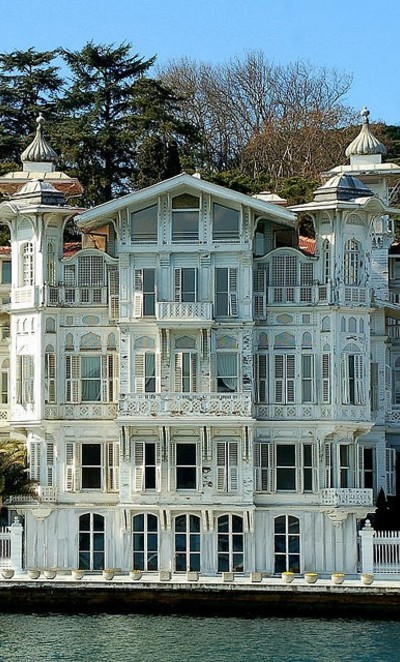
0 notes
Text
Towards the Galata Tower, Istanbul, Turkey

0 notes
Text
Beautiful house on Bosphorus shores, Istanbul, Turkey
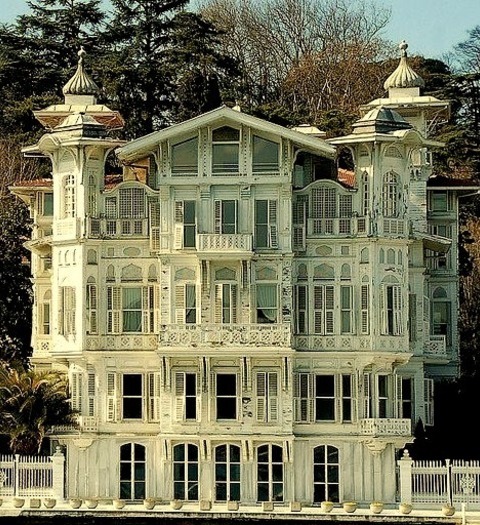
0 notes
Text

16 februarie: Sfântul Ierarh Flavian, Arhiepiscopul Constantinopolului
Prăznuit pe 16 februarie, Sfântul Flavin Mărturisitorul, patriarhul Constantinopolului, a ocupat scaunul arhiepiscopal sub domnia împăratului Teodosie cel Tânăr (408-450) și a sorei sale, Sfânta împărăteasa Pulheria (10 septembrie).
https://www.diane.ro/2025/02/16-februarie-sfantul-ierarh-flavian.html
#16#februarie#sfant#ierarh#Flavian#arhiepiscop#Constantinopol#ziua#sarbatoare#religie#crestinism#dianero
0 notes
Text
Corăbiile care au spart blocada impusă Constantinopolului de flota turcească
În ziua de 20 aprilie 1453 patru corăbii (trei genoveze și una bizantină) reușesc să spargă blocada impusă Constantinopolului de flota turcească aflată sub conducerea amiralului Suleiman Baltaoglu. Pătrunderea lor în Cornul de Aur, după ridicarea lanțului dintre Galata și Orașul Vechi e rezultatul unei succesiuni de întîmplări senzaționale, între care Dumnezeu cel răspunzător de suflatul în…
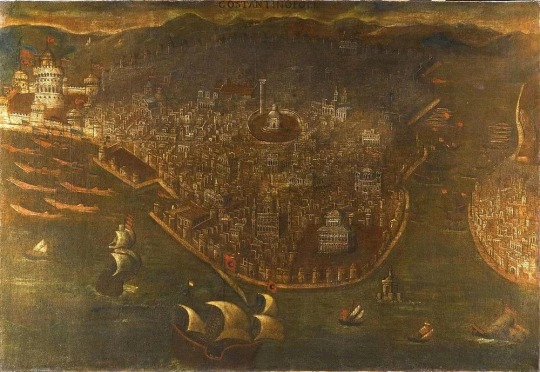
View On WordPress
#caderea constantinopolelui#constantinopol#constantinopole#cucerirea constantinopolelui#mohamed ii#stiri din galati#stiri galati#suleiman baltaoglu#sultanul otoman
0 notes
Text
battle of nicopolis, 1396.

ever wondered what that notorious battle of nicopolis was within the context of KCD2? well, look no further as i try to summarize it in a (not so) few key paragraphs.
____
the battle of nicopolis was significant because it was one of the last crusades in europe (alongside the battle of varna in 1444). at the time, sigismund, hungarian-croatian king, set his sights on the bulgarian region because he believed that re-establishing christian rule in that region would sufficiently serve as a future buffer to his kingdom against the ottoman expansion. this would mark the first part of his crusade likely towards constantinopole, which was besieged by the sultan bayezid i.
this campagin began by sigismund gathering western european forces, which had arrived all the way from france, spain, burgundy, poland, german states, hungary, croatia, wallachia, venice, genoa and others. (even both of the popes agreed on the necessity of this 'holy war' at the time of the western schism). these armies would later split into two, with venetian and genoan naval forces cutting off bayezid's forces from anatolian supplies at bospor passage.
in the north of bulgaria, sigismund and his troops arrived at vidin, where they were welcomed by the locals even though they were ottoman vassals. the crusaders slaughtered the ottoman garrison at vidin to provoke bayezid, and moved onwards towards nicopolis. sigismund believed that conquering and re-establishing nicopolis, the brief ex capital of the bulgarian region, was vital to establishing order.
on their way to nicopolis, the crusaders would pass through another place—oryahovo. the residents of oryahovo surrendered to sigismund, who had spared the inhabitants, but the franco-burgundian forces decided to disregard this and slaughter the inhabitants of oryahovo. thus, the local ottoman garrison along with the muslim and orthodox populace were slaughtered, much to sigismund's horror and frustration.
sigismund's continental advances along with the naval provocation forced sultan bayezid into action and to recuperate his forces and advance north.

the execution of the prisoners in nicopolis, in retaliation for the earlier oryahovo massacre of the ottoman prisoners by the crusaders.
what followed next was nothing short of a foolish, imature defeat.
there have been many internal clashes within the crusader army, but the franco-burgundian knights, young and overconfident, were perhaps the biggest contributors to this battle's ultimate failure.
sigismund had orchestrated a solid plan of attack with wallachian and bulgarian leaders who already had prior experience with battling ottomans along with sigismund's own experience. however, the french knights, seeking glory, accused sigismund of trying to take all the glory for himself and insisted on placing their own cavalry at the frontlines.
to prevent further inner conflict, sigismund was eventually forced to agree with the new plan of attack.
on the day of the battle, the ottoman army had cleverly set up atop a hill with deadly spikes at the bottom. restless, the french knights set out ahead of sigismund's own forces and began their own attack at the archers atop the spiked hill, lost their horses and were forced into submission by bayezid's forces.
by the time sigismund's reinforcements arrived, the ottomans had cut the french knights off from sigismund, and bayezid launched another attack on sigismund's flank via his serbian vassals, stefan lazarević, cavalry. this was the final push which forced sigismund and all his forces into retreat.
their retreat was messy and hurried, with many drowning in danube in the process. there are several recounts on how sigismund escaped, be it via fishing boat or venetian/genoan ships, but he had managed to escape via river with few of his forces remaining.
sultan bayezid, outraged by the crusaders treatment of the inhabitants of oryahovo, had almost the entire french crusaders executed in retaliation, with a rare few being ransomed for a very high price (such as john of nevers).
this battle was one of the main catalysts for western europe's creation of the image of ottomans according to its own christian standards—the west's subsequent poetic mourning of nicopolis was largely a religious and political tool for reuniting the rapidly dissolving christian ideals of unity.
a large number of chronicles on the threat of ottoman expansion were produced because the west wanted to propose a normative discursive order to legitimize the state building process led by the princes and their officials.
this defeat at nicopolis would go on and echo for decades in the european collective consciousness as it dampened the appetite for future crusades and revealed how fragile and divided christian europe had become in the face of a rising power.
on the other hand, the battle of nicopolis was hardly a footnote in ottoman chronicles, and even then it was written down decades later. the infighting within the ottoman empire and the turkish dynasties, along with the battle for constantinopole were far more important in this period of the ottoman empire and western european battles were barely noted in ottoman chronicles. this, combined with the looming threat of the timurid dynasty would prove as far bigger enemies to the ottoman empire than the dying european crusaders.
you could say that battle of nicopolis was 'business as usual' for the ottomans—and that, perhaps, was the most unsettling part for the defeated.
european chroniclers even recounted this defeat as a moral failing of the christian armies, the lack of faith the main 'insurgent' among crusaders, in the attempt to lessen the victory of the enemy.
___
this is a pretty bare bones explanation of the events, but i wanted to size it down into something more manageable and consumable for the average person on here. i leave some useful sources in my wake, as some people had shown interest in them. i hope you find it useful!
- https://www.persee.fr/doc/rbph_0035-0818_2013_num_91_4_8474#rbph_0035-0818_2013_num_91_4_T2_0931_0000 (personal favourite)
- https://historyofcroatia.com/2022/03/21/battle-of-nicopolis-1396/
- https://www.historico.blog/post/battle-of-nicopolis
- https://warfarehistorynetwork.com/article/crusader-disaster-at-nicopolis/
- https://www.twcenter.net/forums/showthread.php?524449-DISCUSSION-The-forgotten-battles-of-the-DotS-timeline!&p=11077885#post11077885
videos:
- kings and generals: battle of nicopolis part 1,
- part 2 (improved)
___
now, all that's left is inserting istvan toth into this mess. can you imagine? should be fun (:<
#battle of nicopolis#sigismund of luxembourg#istvan toth#ottoman empire#crusaders#medieval#history#kcd2#kingdom come deliverance 2#kcd#kingdom come deliverance
88 notes
·
View notes
Note
Heyo!
I don't know how exactly to phrase this but I was wondering if you know anything about Odysseus trying/planing to kill Diomedes while they were stealing the Palladium. I have heard some people say that Odysseus did try to kill Diomedes while doing so but Diomedes noticed him so Odysseus stopped.
This feels so strange to me as Odysseus and Diomedes aren’t antagonistic in the Illiad and Diomedes is loved by Athena like Odysseus so betraying him, especially for hubris, seems like a good way to end up on Athena's bad side.
Also the translated summaries of Little Illiad I know don't mention it either but I know those translations can be missing out context. I suspect the Odysseus Betrayal is a "later adition" to the Epic Cycle but I am not that confident on that opinion.
Yes absolutely and I understand completely what you say. That is because the Palladium Heist betrayal story was peobably not part of the original epic cycle but rather a later adittion. More specifically through the work called Bibliotheca by Photius I, the ecumenical Patriarch of Constantinopole in 9th century seems to be mentioning in his work a Roman mythographer named Conon.
Conon lived and created during the times of Augustus. It seems that he is one of the oldest if not the oldest mythographer to ever mention this story. So the story quoted by Photius goes as such;
Basically after the revelation of Helen's Diomedes and Odysseus enter the city. Odysseus helps Diomedes on his shoulders so that he could climb but when he reaches out his hand Diomedes doesn't take him in and goes for the Palladium himself. When he comes back apparently Odysseus asks him on it and, according to Photius who quotes Conon, Diomedes "knows his cunning" and says that he didn't find it. That a spirit stole it and that he has another one. Odysseus realizes he is lying so he eventually draws his sword to kill Diomedes and take the Palladium to the Greeks himself. Apparently as he goes to stab Diomedes in the back, his sword casts a shadow by the moonlight or the glint of the weapon, Diomedes sees it and deflects him. He draws his own sword and threatens Odysseus with it wishing to "punish him for his cowardice" but eventually he decides otherwise (arguably knowing that the war needs him) and thus he drives him back to the camp while hitting him on his back with the flat of his sword. And according to Photius this is what gave the famous phrase to Greek language διομήδεια ανάγκη (Diomedes Need) which basically means "do something unpleasant out of necessity for the greater good"
So as you see the story does seem pretty bizarre. First it implies mutual distrust and rivalry between the homeric heroes for Diomedes doesn't take Odysseus in the temple, Odysseus asks him on the Palladium obviously with intention to steal it and Diomedes lying to him and of course the actual act. For starters Odysseus ready to kill Diomedes for the sakes of fame (while he literally saves his life in the Iliad) and not only that, be greedy and stupid enough to hold a sword to the moonlight. So it holds many contradictions to the entirety of Epic Cycle even Iliou Persis which also shows a more unpleasant side of Odysseus.
My guess is that the story is mostly linked to traditions of later years especially Roman sources and is not directly linked to the Epic Cycle. Even art of later years doesn't depict the Palladium Heist as a negative aura between the two heroes. If anything they seem to be cooperating just fine. And as I said this myth as told by Conon shows BOTH Diomedes and Odysseus as rivals and equally antagonizing and deceiving each other which doesn't usually appear to the Epic Cycle. Although of course we cannot be 100% sure given how the Epic Cycle is lost, it seems to me more like a roman legend that usually depict Greek heroes of Troy in general and Odysseus in particular, in the most negative light possible given how Odysseus is known for taking Troy, the mythical city of origin to the Romans (given how Aeneas who barely escapes with his life from Troy is the ancestor of the founders of Rome)
I hope this answers your question; to summarize it seems to me that this story of the Palladium Heist has as much connection to the Epic Cycle as Ovid has to Medusa legend; seems more like a version either created or told by Conon based on traditions of his time and the general anti-Odysseus climate.
#katerinaaqu answers#greek mythology#odysseus#tagamemnon#homeric poems#the iliad#diomedes#odysseus and diomedes#diomedes and odysseus#the palladium#palladium#the palladium heist#palladium of athena#photius#conon#diomedes need#diomedes necessity#trojan war#the palladium of athena
91 notes
·
View notes
Text
Batfam as Cats
Because I actually know things about cats.
Bruce is a Maine Coon - they're really big, really smart, really strong and got that aristocratic looks to them. The Wayne heritage and all that shit. Black furr ofc. Also, they're great hunters. They will catch their pray. And tend to be territorrial. Very Bruce-like.

Dick is a Bengal - they're really active and agile, I just thought he's an acrobatic boy, and that's an acrobatic cat. Bengals are fast, smart, and really pretty, and needs much stimulation to not be percieved as mean. They need love, alright?

Alfred is a British Shorthair - and it's not all because it's a british breed, ok? It's just fitting. I honestly couldn't find a cat that would fit Alfred. And they are a fighters if they wanna, and they are nice and fluffy and patience if they wanna. So yes. A British Shorthair. Also they are like, one of the ancient breeds.

Jason is a Cypriot Cat - I wanted a natural breed for him. And the story about Cypriots is great. It goes like that: on Cyprus was an infestation of venomous snakes, so Helen of Constantinopole sent a boat full of cats to haunt them. When they were done, cats went their way and stayed there until today. Both in wilderness and in cities. I just think it's fitting.

Tim is a Burmilla - they are typically independent and do their own things, but are also very attached to their owner. Also, the existence of this breed was an accident. Tell me it isn't Tim with Bruce. They're also rare and expensive so there.

Cass is a Ragdoll - they were developed with a purpose. It's not like Cass exactly, but they were designet to be friendly and limp when picked up. It reminded me of how Cass was created to be a perfect weapon, to serve Cain. To be obidient. And later, when Cass runs away, she is gentle. She deeoly cares for those closest to her. She's loyal to others, but always to herself.

I'm open to other batfam members. Maybe I'll do the rest some other day.
#batman#dc comics#dc#jason todd#red hood#robin#batfamily#bruce wayne#alfred pennyworth#dick grayson#cats#batfam#batfamily as cats#cassandra cain#black bat#batgirl#tim drake#red robin
84 notes
·
View notes
Text
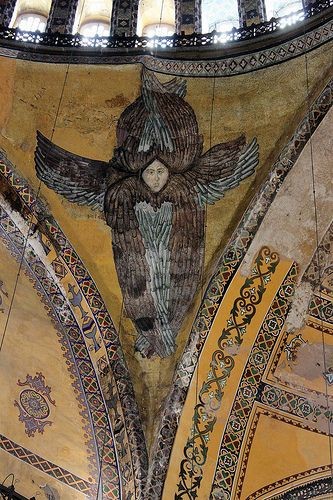
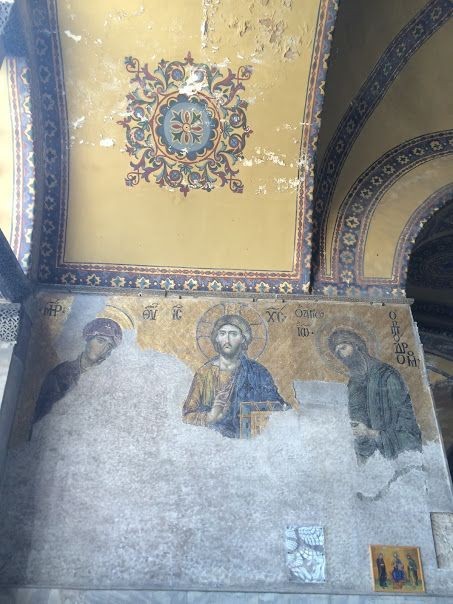

Remaining christian icons in Hagia Sophia, an Orthodox church turned to a mosque after Ottomans took Constantinopole, todays Istanbul. If it remained a church today, it would be the biggest Orthodox Christian church in the world.
#orthodoxy#orthodox christianity#orthodox#christianity#eastern orthodoxy#eastern orthodox#orthodox christian#orthodox church#church
366 notes
·
View notes
Note
If we are being realistic here, real vampire!Vlad would heavily change the history of Romania and Balkans in general. That part does not make any sense in the stories of fictional Dracula(s) - as soon as they turn into a vampire, they forget about their most bitter enemy (TURKS) and go live in their own private la la land for the next 500 years. Uhmm??? I can understand, to some degree, why Stoker's Dracula did that, since vampires are weak in the book and it's easy to kill them. But Hellsings Alucard? You really want to tell me this eldritch ball of fury and hatred did not kill every ottoman soldier with his bare hands and burn Constantinopole to the ground when he finally had power to do so??? Did he really just packed his bags and said "my work here is done. adios 🫡" I meaaaan-
Ah, this is an excellent question!!!
And yes, I did think of that.
(actually by a complete coincidence I was just brainstorming a scene where he nearly succumbs to doing exactly what you say 😄, and how that would go - although it happens in the 21st century. I mean I have the kinda same scene planned when he gets cursed in the 15th century, but I don't have it written down yet 😅)
And I plan to explain it in several psychoanalyses, namely in these posts I have planned for the future 😄:

But for now, I can either give you a complex answer or a more simplified answer 😄.
OR I can actually post the part of the story where he goes through that development! 😁 ...and attach to it notes explaining why he's acting the way he is.
Or I can do it the same way I did it with The Beheading (story + later detailed psychoanalysis of the scene)
#io draculea#my thoughts on dracula#dracula#vampire#vlad the impaler#vlandom#vladcard#hellsing#alucard
18 notes
·
View notes